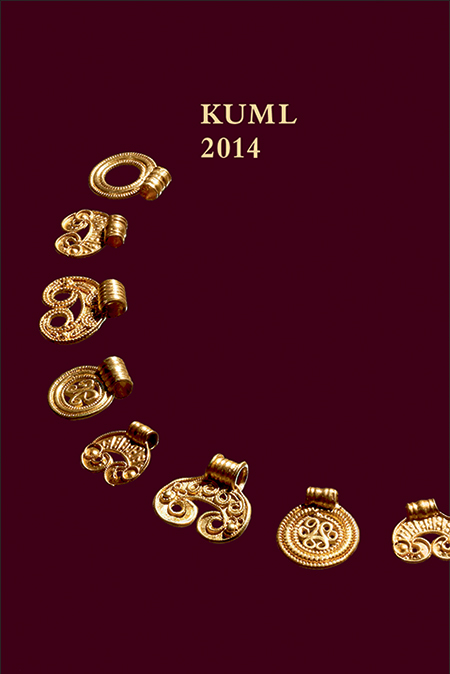Snøreendedupper og snørenåle – Krop, køn og mode i senmiddelalder og nyere tid
DOI:
https://doi.org/10.7146/kuml.v63i63.24468Nøgleord:
snøreendedupper, snørenåle, mode, senmiddelalder, nyere tidResumé
Lace tags and bodkins
Body, gender and fashion in Late Medieval and Modern Times
Changes in fashion beginning in the middle of the 14th century led to the employment of new kinds of dress accessories. Costumes for both men and women had to be close-fitting and use was made of buttons, hooks and eyelets and laces or drawstrings to close the long vents (fig. 8). Of these items, metal tags from corset laces occur most frequently as both archaeological and metal-detector finds in Sydvestjyske Museer’s area. These tags prevented the ends of the laces from fraying and made it easier to thread them through the lace holes.
The tags fall into two general types that have the same function but differ in form and date (fig. 1). The earliest type comprises the tubular or conical tags found in Ribe’s medieval layers from the 13th-16th centuries (cat. nos. 1‑18) (fig. 2). Many of these have preserved remnants of laces and the rivets that secured these (figs. 3 and 4). The second type, known as a bodkin, was probably developed to be fitted to chains in corsets in post-Reformation times (cat. nos. 19‑25) (fig. 6).
The archaeological finds from Ribe are from both secular and ecclesiastical contexts, but they are too few in number to permit anything more to be said on the significance of context. It can, however, be concluded, on the basis of archaeological finds from the town and metal-detector finds from Ribe’s hinterland, that both the urban and rural population made use of these laces.
Laces with tags were employed in the upper part of the costumes of both men and women (fig. 9, 11‑18), in men’s hose and codpieces and in knights’ doublets. Although they occur in the archaeological record as early as the Early Middle Ages, and are particularly evident from the 14th century onwards, they do not feature in medieval art to any great extent until the beginning of the 15th century. There are then, however, a large number of good examples illustrating the use of corsets in all layers of society (fig. 9, 11‑18) and, in many cases, these play on the piquant symbolism associated with the lacing up and emphasis of certain parts of the body (figs. 13, 14 and 17). The pictorial sources also contain a great deal of information on the appearance of laces and on lacing methods, and in some cases the tags are also visible.
Tags and bodkins are found together in 17th century hoards (fig. 8) and they were probably both still in use long after the Reformation. Bodkins are seen depicted in art as late as the 19th century, where peasant girls wear chains and corsets with bodkins (fig. 20). This is just one example of medieval types of costume accessories that continued in use, in a slightly altered form, well into recent times. These objects are in themselves modest, but in conjunction with written and pictorial sources they provide tangible evidence of the use of an artefact type that, over and above a practical role in dress from the 14th century onwards, also supplies information on body ideals, the joy of dressing up and sensuality.
Mette Højmark Søvsø
Sydvestjyske Museer
Downloads
Publiceret
Citation/Eksport
Nummer
Sektion
Licens
Fra og med årgang 2022 er artikler udgivet i Kuml med en licens fra Creative Commons (CC BY-NC-SA 4.0).
Alle tidligere årgange af tidsskriftet er ikke udgivet med en licens fra Creative Commons.


